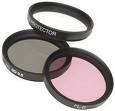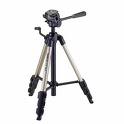
Now that we've discussed cameras there's a world of accessories to go with them, all meant to either make photography easier or to make you a better photographer. For our purposes we will stick to the accessories that help you take better pictures.
EQUIPMENT PAGE 2

- First let's discuss lenses
- The lens in the picture is pretty impresive isn't it? Well forget it you don't need it. This is a Canon 1200 mm. IS lens. the IS stands for image stabilization, and believe me you need IS, or a tripod made of stone with a lens this long. No ordinary tripod is going to hold this lens steady. This lens will take spectacular photos of the moon but here on earth it has very limited use. There are however an almost limitless array of lenses available for just about anything you could want to do and many of them are available with IS. (caveat emptor) These lenses are extremely expensive. Some cost more than the camera your putting them on. But let's stick with the basics. Most DSLRs today come with a zoom lens, usually around 28mm to 80mm. This is a great all around lens. It has the wide angle of a 28mm and the long length of an 80mm lens. So what does all this mean? Well the length of a lens refers to it's focal length, that is the distance from focal plane of the lens to the medium. All you really need to know at this point is, the longer the lens the larger the image. The aveage normal focal length for a DSLR is around 50mm. So you can see that a 28 to 80 lens has a pretty good range. The next thing is the speed of a lens, or it's maximum aperture. What that refers to is the maximum amount of light a lens will let in when it's wide open. All lenses have an adjustable diaphragm inside that you can open and close to regulate the amount of light entering the camera. This adjustment is known as the aperture and it is incrimented in f/stops. The important thing to understand here is that all lenses regardless of length let the same amount of light in at a given f/stop. This makes it easy to learn what f/stop you might need in a give situation. More about this on the Tips page. Know now that all lenses are not created equal and they are not cheap so if your going to spend the money do your homework. It will be worth it in the end.
- A word about filters
- A filter is like another lens element that screws onto the front of your lens. All lenses have threads on the end that facilitate this. It is important to know what size those threads are before you buy the filter and this size is marked right in the front of the lens. It will be written as 58mm for instance. Filters can be a very confusing thing for some amateurs but they don't have to be. There are many different types of filters, Neutral Density, Red, Blue, Green, Polarizing, etc. For right now the only filter you really need is a polarizing filter. These filters are inexpensive and they make a world of difference if your shooting outdoors. They work on the same principal as polarizing sunglasses, only letting light in from one direction.These filters are made-up of two pieces. One piece screws onto the lens and once it's attached the other piece can be turned to adjust the amount of polarization. You can look through the viewfinder while you adjust it and actually see the difference. If you've ever shot outdoors on a hazy day only to have your pictures turn out with nothing but a washed out white sky then you'll love this filter. It will bring out those crisp blues that you saw when you were taking the picture. They are also good for removing the glare from water or glass. I would call them a must have for outdoors.
- Flash
- Most, but not all DSLRs come with a built-in pop-up flash. These are great for little Joey's birthday party, but if your serious about flash photography then you'll need a real flash. There are many to choose from and they can get pricey, but it's a worthwhile expense if you find yourself using a flash often. A Speedlight flash is probably your best bet as it will allow you to grow in your capability without having to replace it to soon. Speedlights will automatically adjust the amount of flash that they put out according to how your camera is set for that exposure and how far you are from the subject. Again more about this on the Tips page. Just know that a good flash is worth every penny.
- Yes you need a tripod
- There's not much to say about tripods except you must have one if your going to take those eye-popingly clear shots. There's just know way around it. The human body has a heartbeat and that can be enough to shake your camera when your using a slow shudder speed, and if your using a long lens it's even more important. Today a good tripod can be purchased for less than $100.00 so don't cheap out now your almost there. Make sure your choice is light-weight and stable. With a swivel, or ball type quick-mount it will be a great piece of equipment.


